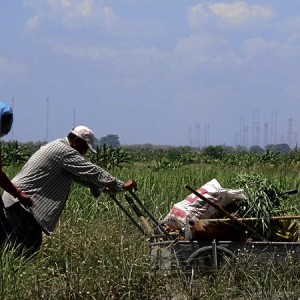Philippine agricultural production grew by 1.8 percent year-on-year to P401.5 billion in constant prices during the first semester of 2014, according to the Philippine Statistics Authority (PSA).
This was slightly faster than the 1.5 percent recorded in the same period of 2013, helped up by a rebound in the crops subsector, PSA data showed.
Crops managed to post a recovery, growing by 3.7 percent. In the first half of 2013, the subsector contracted by 0.5 percent.
In terms of current prices, output jumped by 11.3 percent to P776.5 billion as farmgate prices also turned around.
Prices posted a healthy growth of 9.3 percent after shrinking by 0.5 percent in the same period last year.
Agriculture Secretary Proceso J. Alcala said the numbers indicated that the agri-fishery industry was “on the right track towards sustained recovery after the devastation from natural calamities,” such as Supertyphoon “Yolanda.”
Moving forward, Alcala said, the Department of Agriculture’s proposed P51.7-billion budget for 2015 will be used to carry out initiatives that will sustain gains in staple food production and enhance the competitiveness of Filipino agro-fishery products in the global arena.
Next year’s financial programming will be focused on “providing postharvest facilities and machinery such as rice threshers, combine harvesters and transplanters to help lower losses and production costs,” Alcala said.
In the first half this year, growth was driven mainly by resurgent palay, corn and sugarcane subsectors, the agriculture chief said.
The output of the crops subsector, which represented 53 percent of total output value in current prices, reached P2118.68 billion.
Palay farms alone, which represented 22 percent of total output, yielded P72.6 billion—the biggest amount for any single farm product. The output of palay farms was 4.8 percent higher than that of the previous year.
The PSA attributed this to the increase in harvested areas and yield, which were observed in the regions of Ilocos, Cagayan Valley, Central Luzon and Soccsksargen.
Corn output grew by 4.7 percent to P25.2 billion, while sugarcane production rose by 5.1 percent to P11.9 billion.
The growth in poultry production—accounting for 12 percent of total output—slowed to 0.7 percent, from 4.6 percent, to settle at about P58 billion.
In particular, the PSA said, a sustained increase in demand from hotels and restaurants in Luzon and Mindanao resulted in higher broiler production.
Also, livestock production, which made up 15 percent of the total, improved by 0.9 percent to chalk up P61.8 billion.
In fisheries, which accounted for 16 percent of output nationwide, the harvest decreased by 1.9 percent to reach P70 billion.
The harvest of milkfish, the biggest contributor in fisheries, declined by 2.2 percent to P10.3 billion due to reported operational disruptions in Samar and Davao del Sur.
The PSA also said that the intense heat during the period resulted in small sizes of milkfish harvested in Zamboanga Sibugay.
Likewise, it was reported that fishpond operators in Iloilo were still recovering from the damages wreaked by Yolanda.
